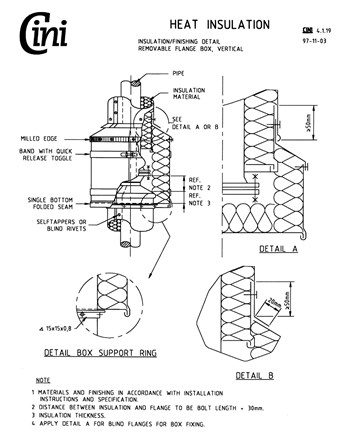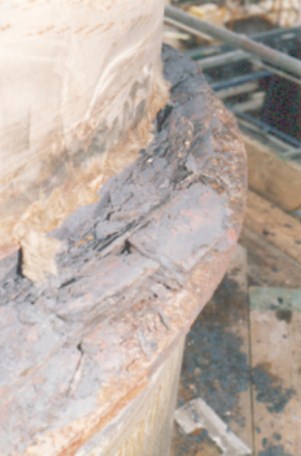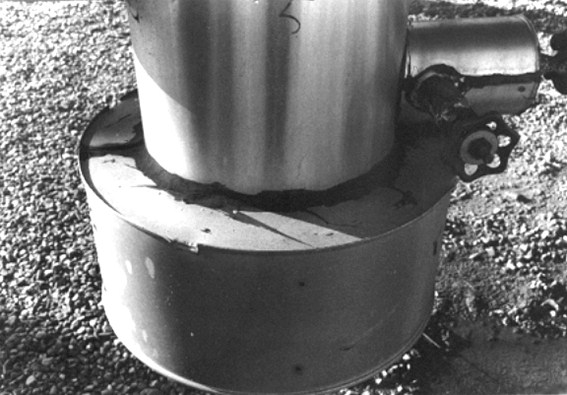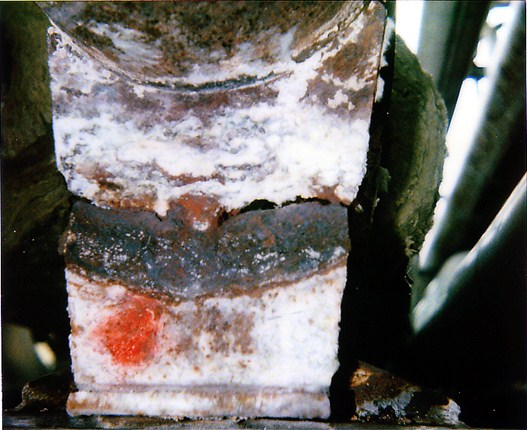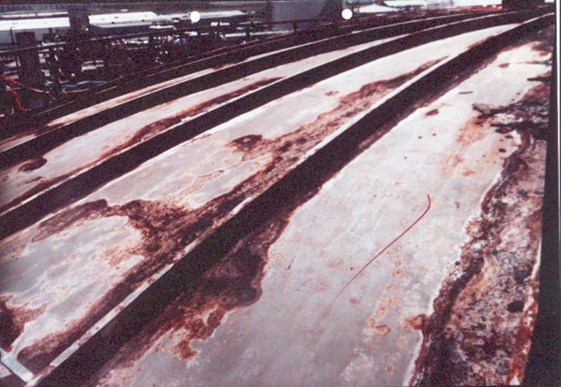

Corrosion Under InsulationProblems and Solutions


The Problem



· Introduction· Scope· What the designer should consider· What the contractor should consider· Guidelines for practical insulation work· Maintenance considerations / what the operator should consider· Summary· Questions


No moisture or water = no corrosion
· Prevention of water penetrating the insulation
system is utmost important


Water can penetrate insulationsystems in three different ways:
- Gaps or openings in the cladding
- Water vapour - due to air movement
- Water in gaseous form - water – vapour diffusion


Scope:
- Advice to owners / operators
- Advice to designers
- Advice to insulation contractors


Measures to be taken:
- Avoid water to penetrate the insulation system
- Ensure effective drainage
- Protect cold insulation systems against ingress of water


Moisture in insulation systems
1% vol. -% of water in the insulation leads to app.4% increase of thermal conductivity
5% vol. -% of water in the insulation system willmake it not functional


The designer should consider:
- The plant design should allow installation of "liquid proof"insulation systems
- Specification of appropriate anti-corrosion applicationsand design of insulation systems


Design phase
To allow full insulation thickness and cladding to becorrectly installed
- Providing for the cladding to run through pipe supportsand hangers without interruption
- Ensure that appropriate insulation systems are used inthe right places
- Valves preferably to be installed with spindelshorizontally or below
Sufficient clearance between plant items:


Experience shows:
- Presence of moisture in insulation systems must be taken intoconsideration
- The absorption of moisture normally occurs in three ways:
1) Ingress of rain or spilt water
2) Condensation by water vapour diffusion
3) Condensation caused by air exchange with ambient temperature


Selection of anti-corrosion systems
The environmental conditions under insulationsystems are often not well defined


Protection against ingress of moisture
- In the design phase it should be established ifthe object could be exposed to rain or spilt water


Effect of Expansion Movement onWeather-barrier or Covering



External Forces to whichWeather-Barrier are subjected



Thermal Contraction of Cellular Insulation
(Mm/10 Metres, Based on 200 C Ambient)







































